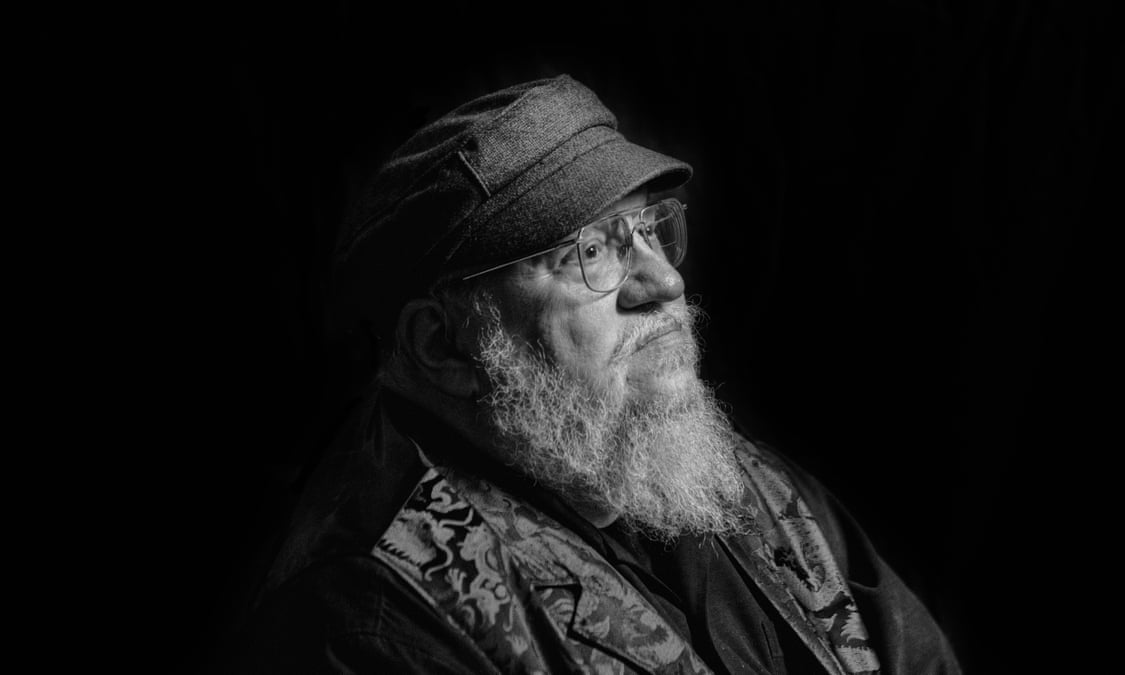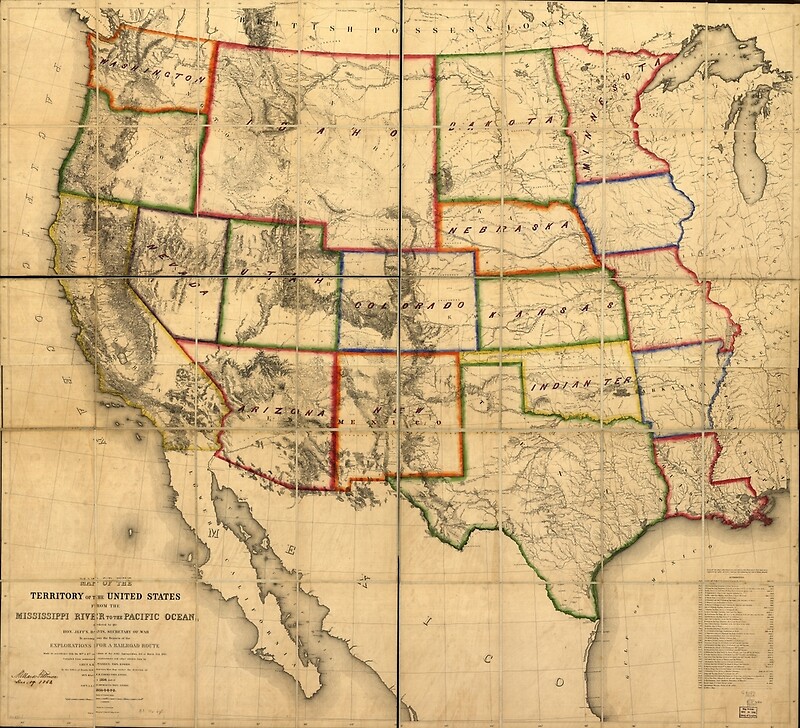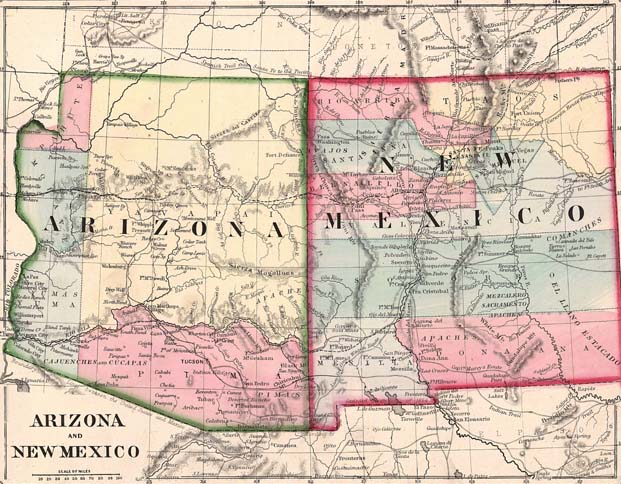++++++++++
–
Interview
George RR Martin: ‘Game of Thrones finishing is freeing, I’m at my own pace’
If George RR Martin could be granted one wish, it would be for more time. The bestselling author of the Song of Ice and Fire saga, the books that became television phenomenon Game of Thrones, is in London for a talk with historian Dan Jones about his most recent work, Fire and Blood, an imagined history of the Targaryen family (the all-conquering ancestors of dragon queen Daenerys), before heading to the science-fiction event Worldcon in Dublin.
Yet, at the back of his mind, is the work still to come. The Winds of Winter, the sixth and penultimate book in Ice and Fire, has to be finished and the seventh, A Dream of Spring, to be written. Then there’s a couple of Dunk and Egg stories set in the same world to complete. (Lighter in tone, he saw them as palate cleansers between “the big mega-books” but then “fell behind with everything, so now I’m just trying to think about the next thing immediately in front of me”.)
And that’s before the many television projects that have sprung up thanks to the success of the series. A number of prequels set in Westeros – including one written by Jane Goldman, which is “set 5,000 years before the events of Game of Thrones” and currently in post-production – a TV version of the Wild Cards anthology series, which he edits, and an adaptation of Nnedi Okorafor’s Who Fears Death, which he is producing for HBO.
“I need more hours in the day and more days in the week and more months in the year because the time does seem to go very fast,” he admits with a weary smile.

Such weariness is fleeting, however. Before we meet, I’m told there are certain things Martin won’t discuss: the controversial ending of the television series earlier this year; when The Winds of Winter will arrive; and his health – he is 70 and the internet is full of speculation about whether he will manage to finish his epic tale.
As it turns out, the genial Martin touches on aspects of all three subjects, although, clearly wary of generating negative headlines, he bats away a question about whether he’d watched the show’s final episode with a firm: “We shouldn’t talk about that.”
He agrees, however, that the end of the series has relieved a great deal of pressure. “There were a couple of years where, if I could have finished the book, I could have stayed ahead of the show for another couple of years, and the stress was enormous,” he says. “I don’t think it was very good for me, because the very thing that should have speeded me up actually slowed me down. Every day I sat down to write and even if I had a good day – and a good day for me is three or four pages – I’d feel terrible because I’d be thinking: ‘My God, I have to finish the book. I’ve only written four pages when I should have written 40.’ But having the show finish is freeing, because I’m at my own pace now. I have good days and I have bad days and the stress is far less, although it’s still there… I’m sure that when I finish A Dream of Spring you’ll have to tether me to the Earth.”
It’s clear that he has a complicated, and arguably unresolved, relationship with the television series. On the one hand, it “completely changed my life” – yet, as he says, “they’re not the same thing, although they are very closely related to each other”. When asked whether the show’s ending – which received mixed responses from both critics and fans – affects his own, he is clear. “No, it doesn’t. It doesn’t change anything at all… As Rick Nelson says in Garden Party, one of my favorite songs, you can’t please everybody, so you’ve got to please yourself.”
Such thinking lies behind Fire and Blood, which came from his desire to “replicate popular histories… the pageants, wars, conquests, marriages and feuds” – although he acknowledges that not every fan is as happy to spend time wandering down Westerosi byways. “Westeros has become very big, and I know that that frustrates some of my fans, who would rather I just keep to the main storyline as they see it, which is the seven-book Song of Ice and Fire. But almost from the first I’ve seen other possibilities, other stories that are buried there.”
He smiles and admits it was ever thus. As a child he started endless stories that he never finished “because I would have this vision in my head but, when I started to put it down on paper, I struggled to find the words and it would become mundane and ordinary and not nearly as much fun”. Later, he notes tellingly of his time in television and film in the mid-80s that he always loved his “big, untidy, expensive first drafts” far more than the pared-down and polished up work that was acceptable to the studio executives.
A Song of Ice and Fire was famously written in response to all those studio notes. A sprawling series filled with “gigantic castles, an extremely complicated plot, direwolves and dragons” that could never be filmed. “And because life is full of little ironies and gods of mischief it was this work that’s impossible to be filmed that went on to become the most popular television show in the world.”
Did he find that, as the television series grew, the Westeros created on screen bled into his? “For the average viewer, and I recognise this, Tyrion Lannister will always be Peter Dinklage from this point forward. But it did not work that way for me. I started writing these books in 1991 and [by the time the series started] I’d been with these characters for 20 years. I had them fixed in my mind.”
What did impress him, however, was how those who had read the books kept the saga’s secrets. “The way in which no one spoiled the Red Wedding is one of the biggest stories in the history of television because there were literally millions of book readers who knew what was coming and they gave nothing away. Instead, they did something which I didn’t expect either – they recorded the shock and dismay of their loved ones.” He laughs. “Suddenly, there were videos all over the internet of people reacting to the Red Wedding, all set up by their relatives who wanted to capture the grief and shock of their husbands, wives, siblings… Has that ever happened in the history of television? Not as far as I know.”
Martin clearly loves these moments of intense interaction with the material. He talks fondly of an evening when he and his wife, Parris, went to a dinner with fans in Spain. It was long before the existence of the TV series, when A Song of Ice and Fire was just beginning to take off and “they all broke into a Spanish version of [a song from the books] The Bear and the Maiden Fair. They were pounding the table and singing, and they all knew the lyrics. It was amazing. I loved that experience.”
He loved too the interaction with fans. In my 20s I spent a fair amount of time on one of the main sites dedicated to the books, and one of the things that most filled me with jealousy reading far away in England were the breathless reports from the Brotherhood Without Banners, a small group of devoted fans who would go to conventions, meet GRRM (as they referred to him), share drinks and, if they were lucky, get knighted by him, sometimes it seemed with breadsticks.
There is an air of melancholy when he talks about that time now. “When I first went to a Brotherhood Without Banners party there would be a few dozen people there, and I became quite friendly with some of them,” he says. “And every time I attended I would meet new ones and spend time with them and run trivia contests for them. It was great but, as the books became more and more successful and then the show became a hit, so the parties became bigger and bigger and more and more crowded.”
He looks wistful. “They still have those parties and they’re still great, and I’m still friendly with the people I met back in 2001 and 2002, but I can’t meet the new people any more because there are too many. I’m sure they’re just as delightful as the old people, but I don’t want to go to a party where an unending succession of people want to take selfies with me, because that’s not fun the way it was in the old days. That’s work.”
Does he miss those early days? There’s a long pause and then he says quietly: “Yeah. Honestly I do. I mean, I can’t go into a bookstore any more, and that used to be my favorite thing to do in the world. To go in and wander from stack to stack, take down some books, read a little, leave with a big stack of things I’d never heard of when I came in. Now when I go to a bookstore, I get recognized within 10 minutes and then there’s a crowd around me. So you gain a lot but you also lose things.”
A similar desire for self-preservation led him to step away from the internet. “At first I was very flattered and I’d go on message boards and think: ‘Oh, this is cool, they’re all really excited.’ But then I began to think: ‘No, I should really steer clear. I don’t like the fact that some people have figured things out that are correct, and I don’t like the fact that other people have figured out things that are wrong but that could influence me too.’ So I took myself out of all that and let fans have their theories, some of which are right and some of which are wrong. They’ll find out which when I finish.”
That said, he thinks all reactions to the material, even the furious ones, should be celebrated. “I’m glad of the emotional reactions, whether to the books or the television show, because that’s what fiction is all about – emotion. If you want to make an intellectual argument or persuade someone, then write an essay or a piece of journalism, write nonfiction. Fiction… should feel as if you’re living these things when you read or watch them. If you’re so distanced by it that a character dies and you don’t care, then to an extent the author has failed.”
With that in mind, does he have a favourite scene where he felt the writing really hit home? I ask fully expecting him to mention one of the most famous moments, the Red Wedding, say, or Ned Stark’s shocking death in the first book.
There’s a long pause before the surprising answer comes. “I remember there’s a speech that a septon [the Westerosi version of a priest] gives to Brienne about broken men and how they become broken. I was always pretty pleased about writing that.”
(For the source of this, and many other quite interesting articles, please visit: https://www.theguardian.com/books/2019/aug/18/george-rr-martin-interview-game-of-thrones-at-own-pace-now/)
++++++++++
–
Dragonfly brains could make missile defenses faster and more accurate
Researchers at Sandia National Laboratories led by computational neuroscientist Frances Chance are looking to the common dragonfly for clues to develop smaller, more efficient missile defenses. By replicating the predatory insect’s brain in a computer algorithm, the goal is to create interceptors that can lock on to threats much faster and achieve a much higher kill ratio.
Dragonflies have been around for about 325 million years and haven’t changed all that much since then, so they must be doing something right. Part of the reason they’ve lasted so long is that, though they are typically associated with bucolic moods as they buzz about on warm summer evenings, they are one of nature’s consummate predators with a kill ratio of 95 percent once they’ve targeted their prey.
The dragonfly manages this through its remarkable brain, which on first inspection seems to be a very simple, even primitive thing, but is capable of some remarkably fast and complicated computations. When it pursues its prey in flight, the dragonfly doesn’t chase after it. Instead, it anticipates where its dinner will be and calculates a straight intercept course that it corrects as its target bobs and weaves.
Sandia National Laboratories scientist Frances Chance is revealing insights into how dragonflies intercept their prey in flight, which might be useful for missile defense. (Credit: Randy Montoya).
This is pretty good, considering that the dragonfly doesn’t even have depth perception, so how does it do this? To find out Sandia National Laboratories did some reverse engineering based on the real dragonfly’s behavior and created simulated dragonflies in a digital environment that duplicated the insect’s brains as neural networks.
According to Sandia, the results mimicked the dragonfly brain with great accuracy. This is of great interest because the dragonfly can react to its prey in only 50 milliseconds, or six times faster than the blink of a human eye. Since this is the time that it takes a signal to pass through a mere three neurons, each dragonfly computation must take only three steps, though living brains do carry out a kind of parallel processing, so a lot of calculations can be done in a very short time by a very simple set of neural circuits.
By contrast, conventional missile defense systems use much more computing power for a very similar task. By using the dragonfly brain as a model, it may be possible to make smaller, lighter computers that need less power to operate, as well as increasing kill ratios. In addition, the dragonfly algorithm could help to intercept less predictable hypersonic missiles or show how to calculate interceptions using less sophisticated sensors.
The researchers concede that there are fundamental differences between dragonflies and missiles – speed being the most obvious. However, even if missile defense proves to be a bust, the new technology could be of great use in artificial intelligence and applications like self-driving cars or prescription drug development and testing.
The research will be presented by Chance at the International Conference on Neuromorphic Systems running this week in Knoxville, Tennessee.
Source: Sandia National Laboratories
(For the source of this, and many additional interesting and important articles, please visit: https://newatlas.com/dragonfly-brain-missile-defenses/60764/)
++++++++++
“Friendly” EMP generator to help protect electronics against electromagnetic attack

Electromagnetic pulse (EMP) weapons might be a staple of movies and video games, but they pose a very real threat. With just about every facet of modern society reliant on electronic devices, Sandia National Laboratories has developed a “friendly” EMP generator to make sure military and civilian equipment can withstand such potentially devastating bursts of electromagnetic energy.
First studied in earnest during the early US atomic weapon tests in the 1940s and ’50s, an EMP is one weapon of mass destruction that, fortunately, has yet to be used in war or by terrorists. The principle is that detonating a nuclear weapon high in the atmosphere can generate a massive burst of radio energy that can overload electricity grids, and electric and electronic circuits and burn them out.
Over the decades, a lot of research has gone into EMPs and it makes for very unpleasant reading. A single EMP attack against even a country the size of the United States would have a devastating effect. The explosion itself might not pose much danger to those below, but the EMP would damage or destroy phones, power grids, communications networks, computers, laptops, smart cards, vehicle electronics, fuel pumps, medical equipment, industrial robots, and just about anything else that has a microchip or even a slightly advanced electrical circuit.
Worse, large H-bombs aren’t needed to create the pulse. Using magnetic coils, it’s possible to produce EMP effects with tactical nuclear warheads or even conventional explosives that could be fabricated by non-nuclear nations or even non-state hostiles. Microwave devices can also generate similar effects and a large solar flare aimed at the Earth can produce the worst EMP effects of all.
The ElectroMagnetic Environment Simulator (EMES) recently installed at Sandia National Laboratories is designed to deliver variable energy pulses to provide engineers with a better understanding of how EMP damages circuits. As a matter of routine, military-grade equipment is shielded against EMPs, but most civilian equipment up to and including power grids aren’t similarly protected, so devices like Sandia’s EMES are very important in making sure that our bank accounts don’t vanish in a blast of electrons.
According to Sandia, EMES is made up of a “hippopotamus-sized” Marx generator that generates a high-energy pulse from a low-energy DC power source, allowing it to simulate lightning and run high-energy physics experiments. EMES is connected to a large capacitor bank that provides a high-voltage blast every 15 minutes, creating the EMP effect. Meanwhile, absorbers behind the target zone soak up any stray energy from the pulse.
The EMES can produce its pulses within a microsecond of a command. This allows the research team to not just test the hardiness of a device against an EMP, they can also see how the pulse affects the device at any particular moment as it carries out its functions. This will help engineers in building stronger, more sophisticated safeguards.
In addition, the EMES can test a large number of components in a single session as one device can quickly be replaced by another as the generator recharges. If a device passes the EMES tests, it can then be sent on for testing against more aggressive EMP threats and its design improved incrementally.
“The builders or owners generally solicit help from my group when it comes to additional shielding designs,” says Leonard Martínez, the Sandia researcher in charge of the timing and firing control system. “The design focus can range from protecting tiny electronic parts to shielding larger subsystems of military equipment. Our customers may decide to implement additional shielding to their device in between tests, or even take the device back to their lab to design and add additional shielding. Then they would bring it back for retesting.”
EMES is located in a renovated test facility that operated earlier versions of the pulse-producing machine from 1978 to 1994, and was rekindled in the wake of the 9/11 terrorist attacks. In addition to testing both military and civilian devices, researchers at Sandia are looking to integrate the machine into a national testing center that would focus on improving the resilience of the national electricity grid.
Source: Sandia National Laboratories
An audio version of this article is available to New Atlas Plus subscribers.
(For the source of this, and many other interesting articles, please visit: https://newatlas.com/friendly-emp-generator-electronics/57580/)
++++++++++
Game Cam Captures Bear Bathing On Barranca Mesa (Los Alamos)
A game cam captures a bear taking a bath earlier this month in the backyard of a home on Kachina Street on Barranca Mesa in Los Alamos, NM. Photo by Andrew Delorey
(For more interesting Los Alamos related stories visit: https://www.ladailypost.com/content/game-cam-captures-bear-bathing-barranca-mesa/
++++++++++
The Insane-Sounding But Totally Real World War II Plot to Bomb Japan With Bats
++++++++++
++++++++++
Legend of the Miraculous Loretto Chapel Staircase
++++++++++
New Mexico: fossilized tracks point to ice age hunters who tracked giant sloth
Tracks in White Sands national monument suggest hunters tracked 8ft creature with long arms and sharp claws – but it’s unclear why —
++++++++++
 Wheeler Peak in the Sangre de Cristo Range
Wheeler Peak in the Sangre de Cristo Range
New Mexico is 258 years OLDER than “Old” México
New Mexico received its name long before the present-day nation of México won independence from Spain and adopted that name in 1821. Spanish explorers recorded this region as New Mexico (Nuevo México in Spanish) in 1563. In 1581, the Chamuscado and Rodríguez Expedition named the region north of the Río Grande “San Felipe del Nuevo México.” The Spaniards hoped to find wealthy Mexican Indian cultures there similar to those of the Aztec (Mexica) Empire of the Valley of México. The indigenous cultures of New Mexico, however, proved to be unrelated to the Aztecs and were not wealthy. Before statehood, the name “New Mexico” was applied to various configurations of the U.S. Territory, to a Mexican state, and to a province of New Spain, all in the same general area but of varying extensions.
From Wikipedia: https://en.wikipedia.org/wiki/New_Mexico#Etymology
++++++++++
Map of Estados Unidos de México – 1824
Mapa de los Estados Unidos de México – 1824
++++++++++
New Map of Texas, Oregon, and California – 1840
New Map of Texas, Oregon, and California – 1840
++++++++++
Oregon, Upper California, and New Mexico – 1848
Oregon, Upper California, and New Mexico – 1848
++++++++++
New Mexico’s Territorial Borders – 1852
New Mexico’s Territorial borders in 1852 extended well into modern-day Colorado, included most of Arizona, and all of far-southern Nevada…!
Taos County, for example, extended from Oklahoma all the way to California…!
Bernalillo, Valencia, and Socorro counties extended from Texas to California….!
New Mexico’s Territorial Borders – 1852
++++++++++
1858 – Territory of the United States from the Mississippi River to the Pacific Ocean
++++++++++
Arizona and New Mexico in 1867
(Note the size of the various Counties…!)
Arizona and New Mexico in 1867
++++++++++
New Mexico’s Female Buffalo Soldier
After the US Civil War “life for freed slave Cathay Williams was so hard that she disguised herself as a man and enlisted in the U.S. Army, hoping that she could find steady employment serving on the wild New Mexican frontier.” She changed her name to William Cathay and served in various posts as a “Buffalo Soldier.” Read about her in the book Forgotten Tales of New Mexico by Ellen Dornan published by The History Press. ArcadiaPublishing.com. ISBN: 978-1609494858. $13.00. 176 pages. 5″x7″.
++++++++++
Acoma Pueblo’s Jewish Governor
“As a young boy growing up in what is now Dortmund, Germany, little Solomon Bibo could never have imagined that the strange path of his life would lead him to become the first and only Jewish governor of an American Indian nation.”
Read about him in the book Forgotten Tales of New Mexico by Ellen Dornan published by The History Press. ArcadiaPublishing.com. ISBN: 978-1609494858. $13.00. 176 pages. 5″x7″.
++++++++++
Mystery Stone, Valencia County
Channel your inner Indiana Jones and visit Mystery Stone, located on State Trust Lands at the base of Hidden Mountain, 16 miles west of Los Lunas. Also known as Los Lunas Decalogue Stone and Commandments Rock, this 80-ton boulder of volcanic basalt bears an inscription which is believed to be an abbreviated version of the Ten Commandments written in Hebrew.
Mystery Stone was first documented in 1933 by University of New Mexico archaeology professor Frank Hibben. Believers say the carvings could be 2,000 years old; skeptics call Mystery Stone a hoax. Which are you? Visit and decide for yourself.
To access State Trust Lands you must purchase a recreational access permit from the New Mexico State Land Office. Permits cost $35, are good for up to 10 people, and are valid for one year.
Visit www.nmstatelands.org for more information.


Publisher’s Note: You may also find the book Los Lunas Mystery Stone and Other Sacred Sites of New Mexico by Donald N. Yates to be of interest. ISBN-13: 978-0-89540-444-2





























